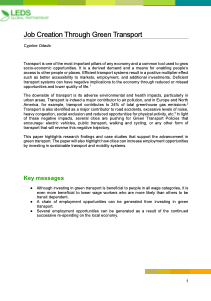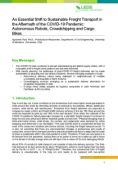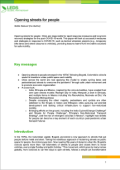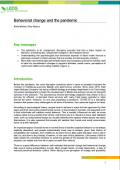
Efficient transport systems have a positive multiplier effect and lead to better accessibility to markets, employment, additional investments and higher quality of life. The downside of transport is its adverse environmental and health impacts, including air pollution and greenhouse gas emissions. It can also provoke road accidents, excessive levels of noise, heavy congestion, social exclusion and reduced opportunities for physical activity. In light of these negative impacts, several cities are pushing for green transport policies that encourage the use of electric vehicles, public transport, walking and cycling.
This paper highlights research findings and case studies that support the advancement in green transport, as well as how cities can increase employment opportunities by investing in sustainable transport and mobility systems. Case studies include examples from public transport and the cycling industry in India and the United States.
This is one of five papers in a series published by the Low Emissions Development Strategies Global Partnership (LEDS GP) Transport Working Group. The papers are co-authored by young people from around the world and aim to leverage insights from COVID-19 response measures to drive more sustainable, inclusive and resilient transport systems.




